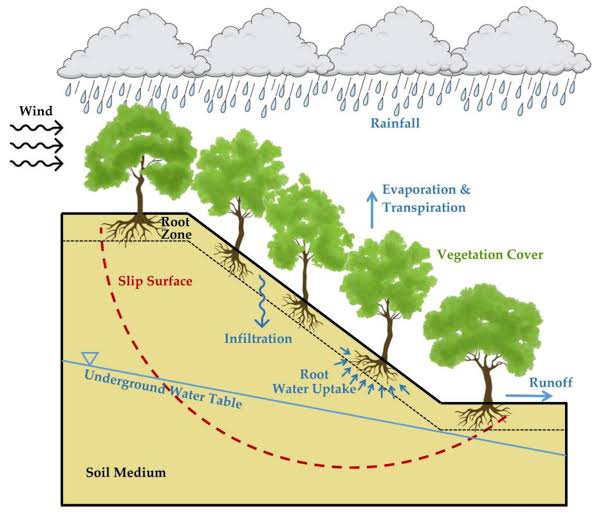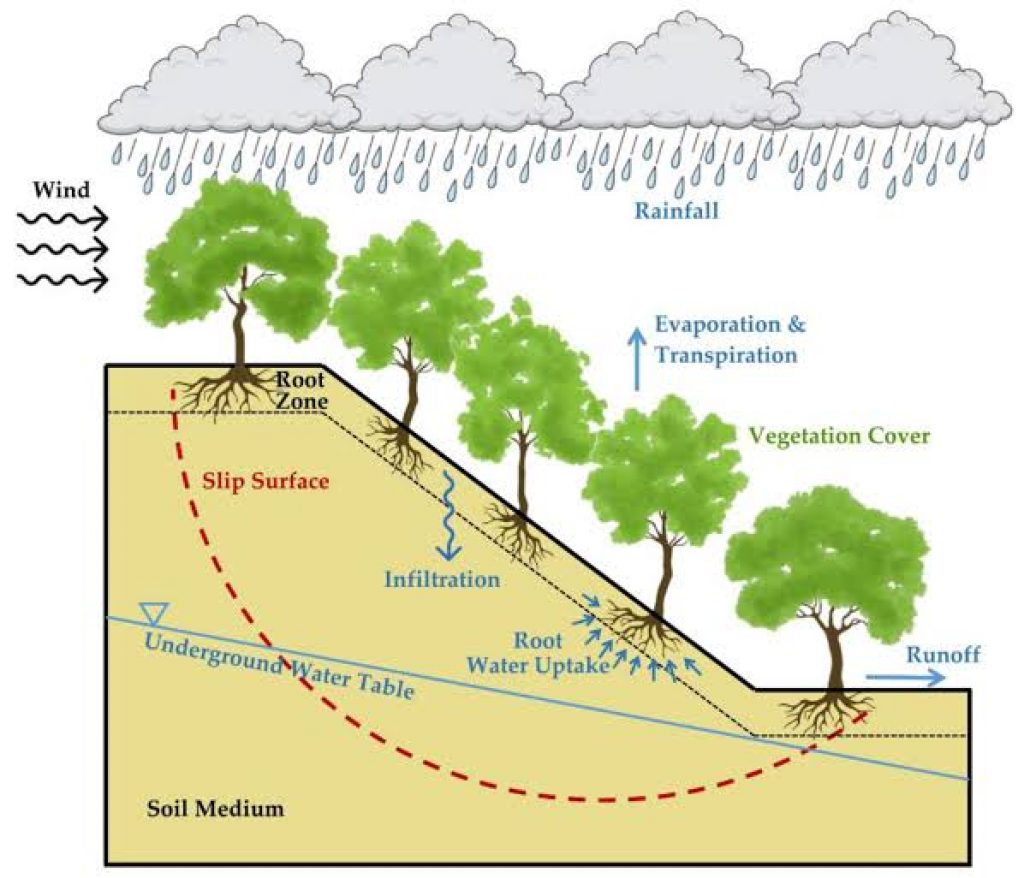
This animation shows the operation of the ‘macro-instability inward’ failure mechanism. With macro instability inwards, the dike on the landside can collapse due to excessive pressure in the groundwater below and behind the dike. Dike nailing is a technique to reinforce a dike. This method has been applied to the Ringdijk near Vianen.
Slope stability analysis is a static or dynamic, analytical or empirical method to evaluate the stability of earth and rock-fill dams, embankments, excavated slopes, and natural slopes in soil and rock.
Slope stability refers to the condition of inclined soil or rock slopes to withstand or undergo movement. The stability condition of slopes is a subject of study and research in soil mechanics, geotechnical engineering and engineering geology.
Analyses are generally aimed at understanding the causes of an occurred slope failure, or the factors that can potentially trigger a slope movement, resulting in a landslide, as well as at preventing the initiation of such movement, slowing it down or arresting it through mitigation countermeasures.

The stability of a slope is essentially controlled by the ratio between the available shear strength and the acting shear stress, which can be expressed in terms of a safety factor if these quantities are integrated over a potential (or actual) sliding surface.
A slope can be globally stable if the safety factor, computed along any potential sliding surface running from the top of the slope to its toe, is always larger than 1. The smallest value of the safety factor will be taken as representing the global stability condition of the slope. Similarly, a slope can be locally stable if a safety factor larger than 1 is computed along any potential sliding surface running through a limited portion of the slope (for instance only within its toe).
Values of the global or local safety factors close to 1 (typically comprised between 1 and 1.3, depending on regulations) indicate marginally stable slopes that require attention, monitoring and/or an engineering intervention (slope stabilization) to increase the safety factor and reduce the probability of a slope movement.
